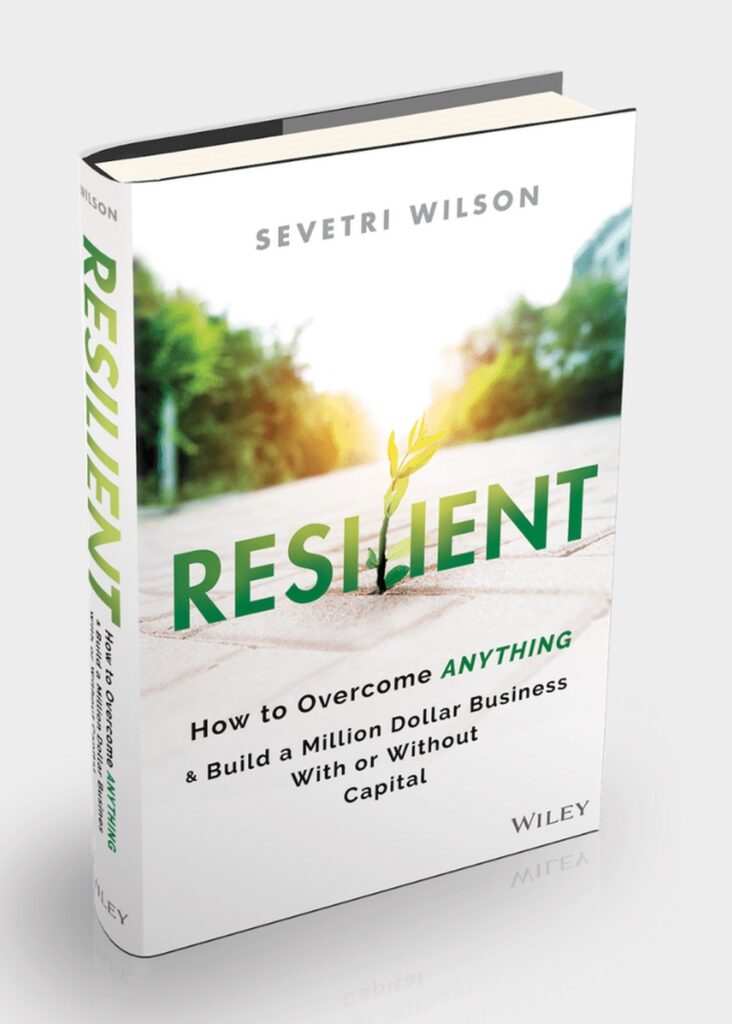Sharing my learnings from the book, Resilient by Sevetri Wilson
Resilient by Sevetri Wilson
Resilient delivers an invaluable collection of private journal entries mapping out a path from bootstrapping a multi-million dollar business to raising millions in Series A funding for another. Entrepreneur and Resilia CEO Sevetri Wilson describe her journey from self-funding to venture capital success. Written for ambitious and aspiring entrepreneurs like herself, Wilson covers a wide variety of topics about the entrepreneurial journey

- You can successfully build a company without investors. Bootstrapping involves using the resources you already have – typically your own expertise and a small amount of your own money to cover initial costs.
- they retain full control of their company.
- retain 100 percent ownership of their business
- Limited cash can slow growth, and you’d be taking on the entire financial risk yourself
- Ask yourself the following questions to decide which financial model to use. If you answered yes to each question, bootstrapping will work for you:
- Will it be low-investment to start your company?
- Can you start your company without needing to hire anyone else?
- Is there a clear market for your product or service?
- Are you an absolute money management expert who can control any impulses to break your budget?
- having a great idea and being able to turn it into a marketable product are two different skills.
- Regardless of whether you’re planning to bootstrap or fundraise, there are three crucial points to consider before you invest time, money, and energy in your business concept.
- market – identify who your ideal customer is and track down a few people who fit that profile
- what it’ll take to get your product on the market.
- time – key resource you’ll need to build your business and get your product on the market
- If you need to outsource work, recruit wisely.
- Start by using a platform that curates talent, like Toptal or Andela
- Referrals are another great way to connect with reliable performers
- via an agency. Keep in mind that the agency will build their fee into the freelancer’s rate, so it’s an expensive solution in the long term.
- Securing investors is less about your product and more about you.
- Start by building relationships long before you need any money
- your ideal first investor is someone who deeply believes you’re the right person to turn your great idea into a successful product or service
- create opportunities to meet people who might be interested in your vision
- Focus on selling yourself – not selling your idea
- Story has the power to capture the listener’s interest and motivate them to take action. By carefully preparing the story of your own entrepreneurial journey, you can harness the same power to get the seed funding you need.
- Before you approach potential angel investors, develop a compelling story that will inspire them to invest
- Practice telling your story until you’re word-perfect, but make sure you sound genuine too
- Having an existing relationship with the person you’re approaching is also an asset
- Let the nature of your relationship with a potential investor guide your approach
- If the person you’re approaching has never been an investor before, be clear about the risk involved by telling them they may lose their money
- Carefully evaluate the real cost of every pitching opportunity.
- When it comes to securing early-stage funding, accelerator programs are a good alternative to pitching competitions. These programs run for a set period of time – usually three months. During this time, founders are given around $100,000 worth of funding to fast-track the growth of their startup. As an added bonus, they are supported by advisors with a range of expertise, and they have the opportunity to grow their network. In exchange for participating, you’ll have to give the organizers 5 to 8 percent equity. They’ll tell you this figure isn’t negotiable, but Wilson found that you can reduce this percentage if you do it quietly, behind closed doors. Participating in an accelerator can help you gain other investors too. Often, the organizers will host a demo day at the end of the program to showcase startups to angels. Even if you don’t land funding on demo day, it’ll force you to prepare all the resources you need for your pitch so you can approach other investors after the program.
- When you first launch your product or service, what you need more than anything else is regular, predictable income. You need to know that Process A will lead to Sales Outcome B. Repeating this process generates steady cash flow. And that consistent cash flow means you can plan how to reinvest your revenue to grow your business.
- generating leads – Allocate members of your sales team to either generate those all-important new business leads, or present your product to potential clients and close the deal
- effectively targeting customers – create a detailed profile of your ideal customer, and make a list of people who fit that description. Contact marketing, which combines research with personalization, is another tactic you can use to reach busy executives with lots of gatekeepers – like CEOs
- tracking conversion – keep a detailed log of every interaction you have with a potential customer. This will allow you to track your conversion rate and evaluate how successful your sales strategies are.
- Keep a level head when it comes to subsequent fundraising
- Prepare for your Series A round funding by first identifying your company’s key characteristics: its viable business model, scalability, adaptability, and market traction
- evaluate whether it’s the right time to start your campaign
- work with a legal counsel to make sure your deal terms will benefit you
- approach investing the same way you would a marriage


Leave a Reply